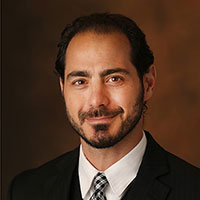The most comprehensive study to date comparing the cost-effectiveness of different hydrocephalus surgical treatments delivers valuable insight that can help hospitals identify potential cost-saving opportunities. The study – conducted at Monroe Carell Jr. Children’s Hospital at Vanderbilt – analyzed the total hospitalization costs for patients undergoing the three main hydrocephalus treatment procedures: 1) ventriculoperitoneal shunting (VPS) 2) endoscopic third ventriculostomy (ETV) and 3) ETV with choroid plexus cauterization (ETV/CPC).
“As different techniques become popular, we must systematically evaluate not only their clinical outcomes, but also their costs,” said Christopher Bonfield, M.D., assistant professor of pediatric neurosurgery at Vanderbilt University Medical Center.
Overall, results found ETV to be both the most and clinically and cost-effective treatment. However, for patients whose hydrocephalus was secondary to diagnoses of myelomeningocele and post-hemorrhagic hydrocephalus (PHH)—for which ETV was never used as the intervention—VPS was the most clinically and cost-effective option.
ETV had both a shorter average length of stay and lower average hospitalization cost per day than VPS and ETV/CPC for procedures that had no operative failure that required re-intervention.
ETV COSTS LESS, LEADS TO SHORTER HOSPITAL STAYS
Results published in the Journal of Neurosurgery describe inpatient costs and professional fees for 147 patients: 113 VPS cases, 20 ETV/CPC cases, and 14 ETV cases. Follow-up costs for needed re-interventions were gathered for 12 months post-initial operation.
Overall, ETV treatments had an average cost of $94,797, ETV/CPC had a cost of $126,394 and VPS had a cost of $130,839. For patients who had no operative failure, ETV was also the least expensive—$35,602 compared to $63,261 for ETV/CPC and $88,024 for VPS. ETV/CPC had the highest rate of failure of the three operations.
ETV had the shortest length of stay of the 3 procedure groups for patients only needing an initial intervention—2.36 days compared to 3.35 for ETV and 5.65 for VPS. Length-of-stay varied greatly for those needing a re-intervention, with the highest being for VPS infectious failures, which was also the costliest complication.
A large portion of the study subjects fell into two etiology categories: 28.6 percent had a myelomeningocele diagnosis and 13.6 percent a PHH diagnosis.
“All types of hydrocephalus may not be the same, and one treatment modality may not be the best option for all cases.”
For myelomeningocele patients, VPS was more cost-effective ($76,620) and more clinically effective than ETV/CPC ($112,762). For PHH patients, the same held true, with VPS ($176,867) beating ETV/CPC ($191,713) in price and clinical effectiveness. No ETV procedures were performed for either of those types of patients, and for all other etiologies, ETV outpaced ETV/CPC and VPS. VPS was the costliest of all three when excluding myelomeningocele and PHH patients.
“We are learning that all types of hydrocephalus may not be the same, and one treatment modality may not be the best option for all cases,” Bonfield said.
First study of its kind in U.S.
This study is one of the first to quantify the cost of hydrocephalus for patients in the United States and it delivers insight for surgeons and hospitals to better assess treatment options. It should provide opportunities to improve cost-effectiveness without compromising patient care.
With hydrocephalus being the most common pediatric neurosurgical procedure and nationwide costs for hospitals approaching $2 billion annually, the importance of reducing costs has the potential for great impact.
“First and foremost, we strive for safe and effective treatments of hydrocephalus,” Bonfield said. “If we can concurrently reduce costs as well, this will also benefit the field and our patients.”






